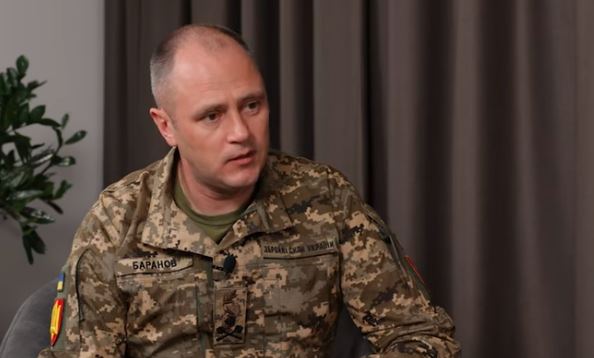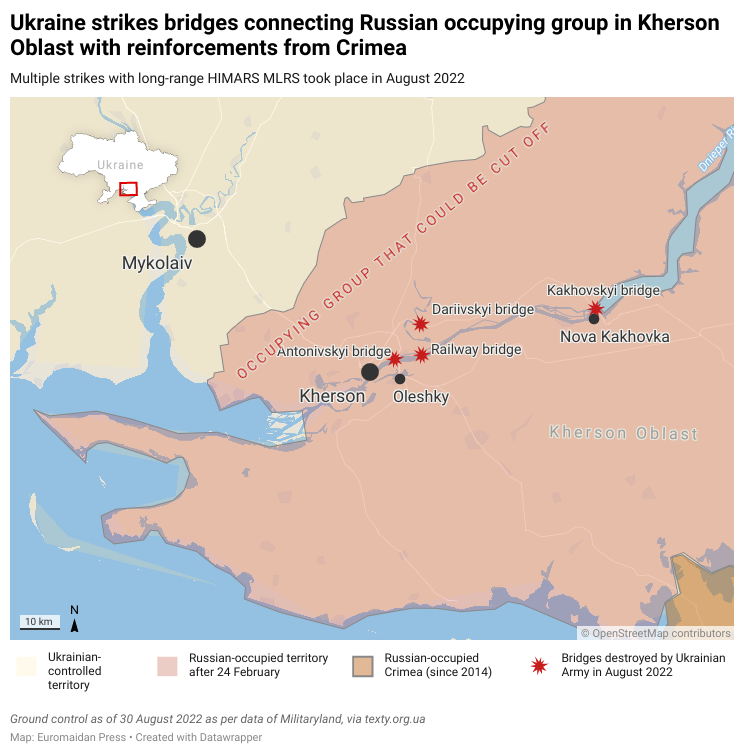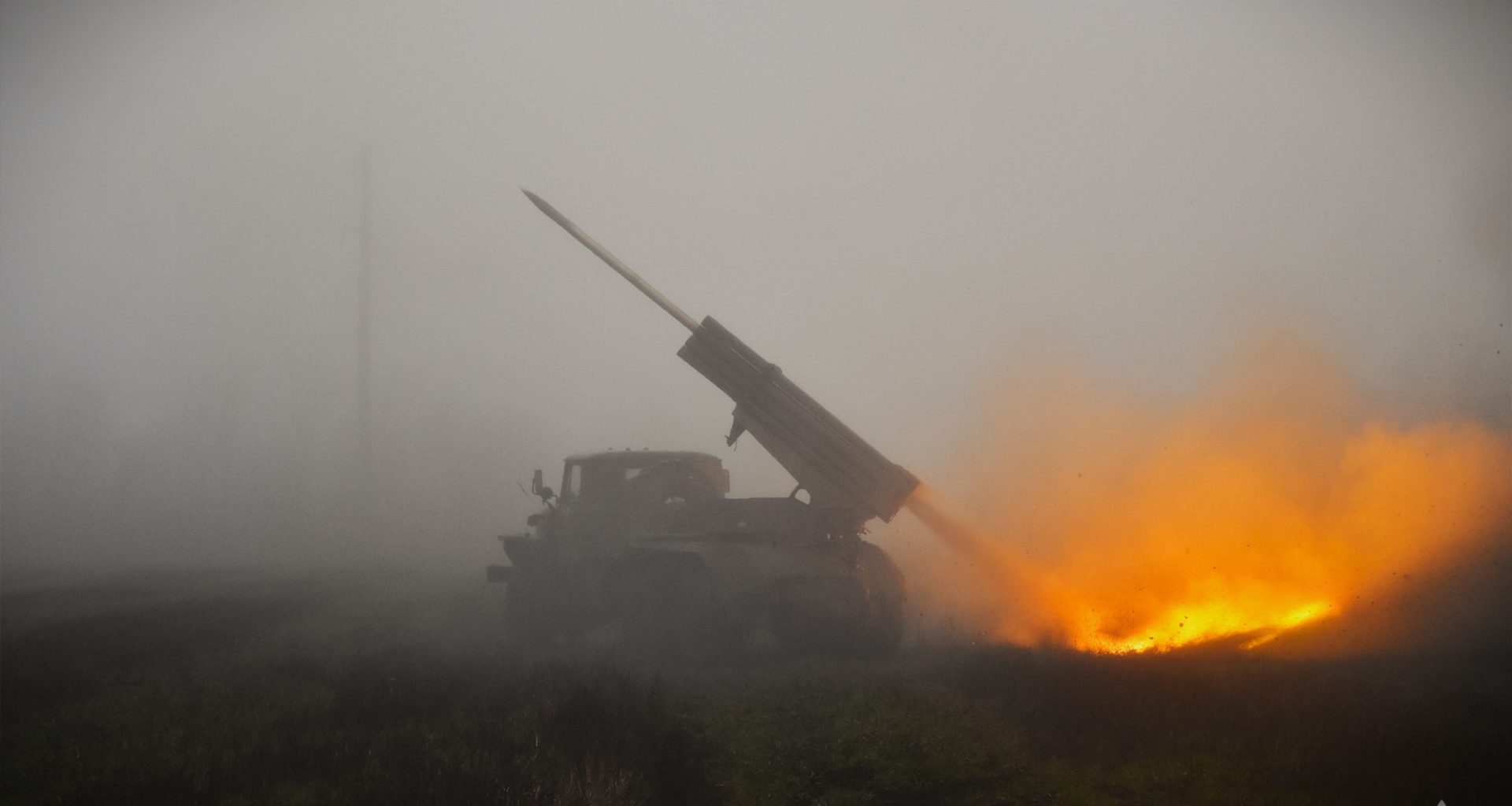On 31 August, President Zelenskyy unveiled the successful deployment of a Ukrainian long-range missile that struck a target 700 kilometers away.
“This is a completely new missile, and we will continue to enhance its capabilities in terms of range and accuracy,” states Brigadier General Serhii Baranov, Chief of the Main Directorate of Missile Forces and Artillery and Unmanned Systems at the General Staff of the Armed Forces of Ukraine, in an interview with the KYIV NOT KIEV project.
Missile forces and artillery present formidable challenges for the adversary.

“The professionalism of our military allows us to hit the bullseye with a 152-caliber shell from a distance of 28 kilometers,” quips General Baranov. However, behind the jest lies a sense of pride in the skill of Ukrainian artillerymen who adeptly master Western weapon models, utilizing and maintaining them successfully.
What groundwork precedes each artillery strike in Ukraine? What does the Ukrainian artillery need to expedite the return of Crimea? What portion of artillery needs is supplied by the Ukrainian defense industry? Tetiana Gaiduk explores these questions and more in a conversation with General Baranov (part 1, part 2).
Ukraine maintains tactical superiority over the Russians
The landscape of Ukrainian artillery has evolved greatly during the war. General Baranov suggests tracking these changes within two distinct time frames:
- from 2014 to 2022;
- from 2022 to the present.
In the initial period, artillery units operated exclusively on Soviet-era systems, striving to enhance their capabilities. The introduction of the automated control system “Kropyva” eased the workload for military personnel, streamlining calculations during firing—an innovation absent in previous solutions for similar systems.

As Ukraine’s allies began providing new weaponry in the face of Russian aggression, the Ukrainian armed forces achieved dual successes:
- They effectively trained personnel in the application of these new systems.
- They established a robust system for the operation, repair, and domestic production of analogs within Ukrainian enterprises.
Responding to a question from the Institute for the Study of War regarding tactical superiority in artillery over the Russians, General Baranov assures that Ukrainian forces currently maintain this advantage. While the Russians may rely on aviation and air power to secure firepower superiority, for Ukraine, the focus remains on missile forces and artillery.
According to the General, the adversary quickly learned and adopted Ukrainian methods, tactics, and maneuvers in fire control, camouflage, deception, and more. However, Ukrainians do not lag behind.
Drawing parallels to business and sports, General Baranov emphasizes the importance of adaptation. “If you don’t adapt, learn, try to be stronger, more agile, etc., you will lose this battle. So we are constantly learning, improving, working closely with our military-industrial complex to have modern weapons and use what we have as efficiently as possible,” he says.
Today, the use of artillery differs significantly from the massed artillery tactics employed during World War II to break through enemy fronts. However, the introduction of HIMARS on the battlefield has markedly increased the strength of Ukrainian artillery, catching the attention of the Russians.
With precision strikes, Ukrainian forces disrupted the logistics of their adversaries, inducing a two-month-long ammunition shortage. Ukrainian artillery consistently delivers devastating blows not only to physical targets but also to the morale of Russian forces.
“Every day, there are tactical instances where a single artillery shot destroys an enemy’s high-value electronic warfare asset, such as ‘Zhitel’ or ‘Redut.’ A precise strike can wipe out a command center housing the brigade or battalion headquarters. Such occurrences are commonplace,” asserts General Baranov.
What goes into an artillery strike
The general sheds light on the intricate and comprehensive process preceding each artillery shot.
An entire chain of actions occurs before a cord is pulled or a button is pressed. The Main Intelligence Directorate (GUR), border guards, external intelligence, Special Operations Forces, military intelligence, artillery scouts, and aerial reconnaissance all collaborate to gather information and determine the target coordinates.
After this, a mandatory analysis is conducted to ascertain the necessity of targeting a specific object, such as the Antonivskyi Bridge in Kherson Oblast, and determine the most effective time to strike. The decision is based on when the bridge’s destruction will have the greatest impact on the enemy and create the most favorable conditions for Ukrainian forces.

Following this, the type of ammunition needed for the strike is determined, and calculations are made to prepare the artillery piece for launch – loading, ammunition preparation, and finally, the launch itself. General Baranov encapsulates this process, stating, “The expression that artillery is teamwork, and life is a team game, is always relevant.”
What Ukraine needs to reclaim Crimea
At the onset of the Ukrainian counteroffensive, many military experts, both Ukrainian and Western, believed that Ukraine had a chance to regain control of Crimea by the end of the summer of 2023. However, this optimism hinged on the condition that Ukraine received all necessary weaponry from the West.
“For the successful execution of the task, there must be parity, if not in manpower, then at least in weaponry and the availability of ammunition to eliminate such a quantity of enemy forces and objects,” insists General Baranov.
To reclaim Crimea, Ukrainian forces require rockets, various types of artillery, from domestically produced “Bohdana” to M777, M109, FH70, and a larger quantity of ammunition.
According to the Concept of Reequipping Missile Forces and Artillery, the Ukrainian military is gradually phasing out the 152mm artillery shells in favor of the 155mm caliber. General Baranov reveals that the Ukrainian defense industry currently provides about 20%, and in some cases even up to 50% of the production of certain types of artillery shells.

More about Ukraine’s production of weapons and ammunition:
- Ukraine organized manufacturing of indigenous 155mm self-propelled howitzer Bohdana
- Ukraine finally launches domestic ammunition production. How will this impact the war?
- Ukraine’s ammo production surges but still lags behind consumption
Efforts are also underway in the production of mortars and towed artillery. Work is ongoing in the development of missile forces, with General Baranov stating, “There are already experimental samples, tests are being conducted. I can’t disclose everything, but we are working.”
General Baranov emphasizes the primary task of artillery: anything that can or attempts to open fire on Ukraine’s infantry must be destroyed. He believes that artillery can accomplish this with proper logistical support: “We have more weapon models than NATO. This poses certain difficulties in logistics, but we don’t have any weapon that we can’t use, service, and improve.”
Baranov sees the strength of Ukrainian artillery in the talent of Ukrainians, who quickly learn and have no issues mastering Western artillery systems. The success and proficiency of Ukrainians will determine the pace and volume of the supply of Western artillery weaponry. “Who will provide weapons if we cannot master them?” Baranov rhetorically questions.
The general appreciates the support of volunteers assisting the Ukrainian Armed Forces, highly values the development of the drone industry, and notes the significant involvement of businesses in practical resistance to Russian aggression.
He sums it up, stating, “War is, first and foremost, a war of resources. The resources of one country against the resources of another. Therefore, it concerns the entire country.”
Related:
- EU (predictably) admits it will fail artillery shell pledge for Ukraine
- Newsweek: Ukraine is winning artillery war against Russia
- Ukrainian counteroffensive: genocide of Russian artillery


